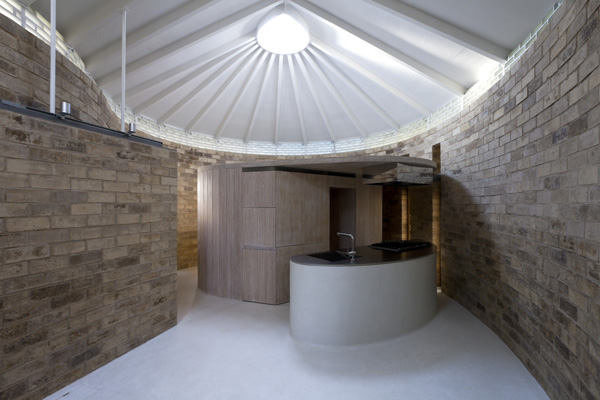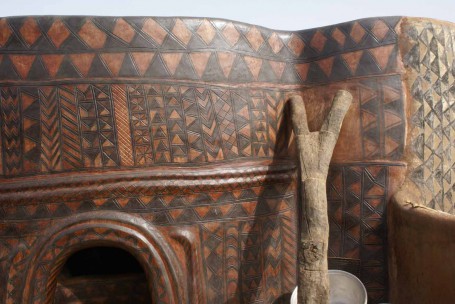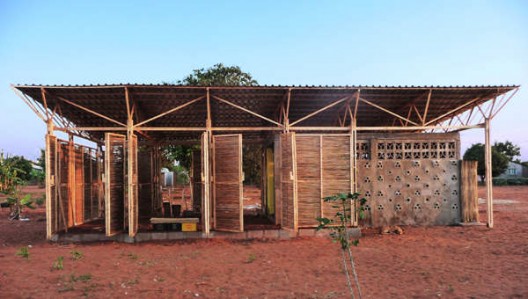
The Earth Brick Residence in Chiba, Japan by Atelier Tekuto is a single story structure comprised of 2,600 compressed earth blocks stabilized with magnesium oxide. The mineral was used for masonry joint for pyramids and Great Wall in China. Its substances are extracted from the ocean or land and can be produced everywhere in the world and resourceful. Also, it is safe as food additive, and harmless enough to return to the ground.

The strength of the bricks is much greater than the traditional sun-baked earth blocks made from animal manure and lime — a process typically seen in developing nations. The different composition used in this project’s earth blocks mean that they surpass Japanese construction standards for strength, one of the most stringent in the world.

The house is the result of The Earth Block Project started in 2008, was developed together with Universities, corporations, and specialists with the idea that construction materials can be made with any soil in the world can be stronger than the existing soil construction materials and return 100% to nature.




